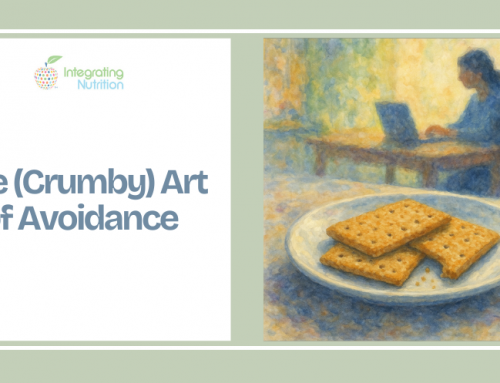Whose Body Is It, Anyway?
It would probably come as no surprise for anyone to learn that I, like countless others, struggled with disordered eating when I was a teen. In my case, these eating issues were comparatively minor, but they were painful enough to open my eyes to the realization of what a lot of people go through. In fact, I was so affected by that experience that I have gone on to dedicate much of my adult life to working to alleviate the stress and upset of other people struggling with similar adversities.
I first became a Registered Dietitian to help people deal with nutrition issues. As I’ve written here before, It didn’t take me long after going into private practice as a nutritionist to realize that body image, eating, and food issues are rarely resolved through diet counseling alone. More often than not, I soon realized, my patients’ relationships with food and eating had less to do with their commitment to principles of good nutrition than it had to do with the often tortuous emotional and psychological complexities they struggle with. Moreover, many of my clients were children, brought in by parents who seemed to take their kids’ eating and food challenges very personally. So I went back to school for training that would help me see all sides of the issues; to expand my expertise on the emotional and psychological aspects of eating disorders and related issues.
And so I realized that one of the thorniest aspects of the jumble of food, eating, and body image issues begs a simple question: whose body is it, anyway?
* * *
The child-parent relationship is complex in a myriad of ways; one of the most complicated forms of this revolves around separation, that is, the years-long process of the individuation of the child from her parents. As a parent, I certainly get how rocky that path can be: in the early days of parenthood we cannot but help see our tiny babies as extensions of ourselves–as our own parents might have seen us–but over time parent and child grow apart and define themselves as separate, independent beings. Or so it is supposed to go.
Sometimes, parental concern spills over healthy boundaries between parent and child; this breech is often kicked into hyper-drive by parental anxieties. We parents want what’s best for our kids, of course. And part of what’s best for them (which is to say, what makes life easier and prospects brighter) is A. good health and B. a capacity for favorable social integration; in other words, does she fit in?
* * *
Let’s take a moment to remember that smaller bodies are not necessarily healthy bodies and larger bodies are not necessarily unhealthy bodies. Also, some very healthy, fit bodies are naturally thicker and curvier than equally healthy leaner bodies. Let’s also take a moment to remember that beauty conventions are entirely social constructs (so-called beauty queens of a half century ago would be considered overweight by today’s arbitrary standards,) and BMI (body-mass index) is an inaccurate way to gauge real health. And finally, the bodies of many kids going through puberty may look especially curvy for a period as their bodies make important, natural, and necessary changes.
Matters about kids’ bodies–no surprise–can feed parental anxieties stemming from concerns about the health and potential social acceptability of their children. Many parents (and grandparents, aunts, uncles, etc.) react from their anxieties and project them onto their kids; the fact that many of these adults may have unresolved body issues only serves to make things worse. In some cases, very insecure parents can personally take on what they see as flaws in their children; with only flimsy boundaries between them, these parents can actually own the negativity they imagine their kids are promoting. The bottom line is, parents buying into emotionally toxic, false ideas about physical acceptability can unwittingly cause emotional scars in the very children they are trying to nurture. Many of my adult patients struggle, years later, with the fallout of these painful dynamics.
* * *
The way out of all this is a bit complicated. The first is an attitude adjustment on the grown-up’s part. Realize and accept that there are many healthy body types. Realize and accept that a good sense of self is what helps people fit in socially. Realize and accept that as kids reach adulthood, all types of people find all types of people attractive. If your sons or daughters feel good about themselves, they will be able to create healthy romantic relationships when that is appropriate.
The truth is, there are many ways to eat healthy, and we might empower small kids by letting them select which healthy food they wish to eat. We can help them to learn and honor their own hunger and fullness cues. This approach will help support healthy boundaries between you, while guiding them to listen to their intuitive eating senses. Part of embracing intuitive eating is through mindfulness. We can encourage their gratitude for meals by expressing it ourselves; they may appreciate the work we put into making sure they have wholesome food when we express how grateful we are. If we, the grownups, can aim for having a healthy relationship with food and our bodies (and give ourselves a break when we don’t do things perfectly,) the kids will naturally follow suit.
The takeaway is that with a healthy focus on these dynamics, and respectful boundaries between us, we’ll all be better us… we, fully in our bodies, and they, in theirs.





